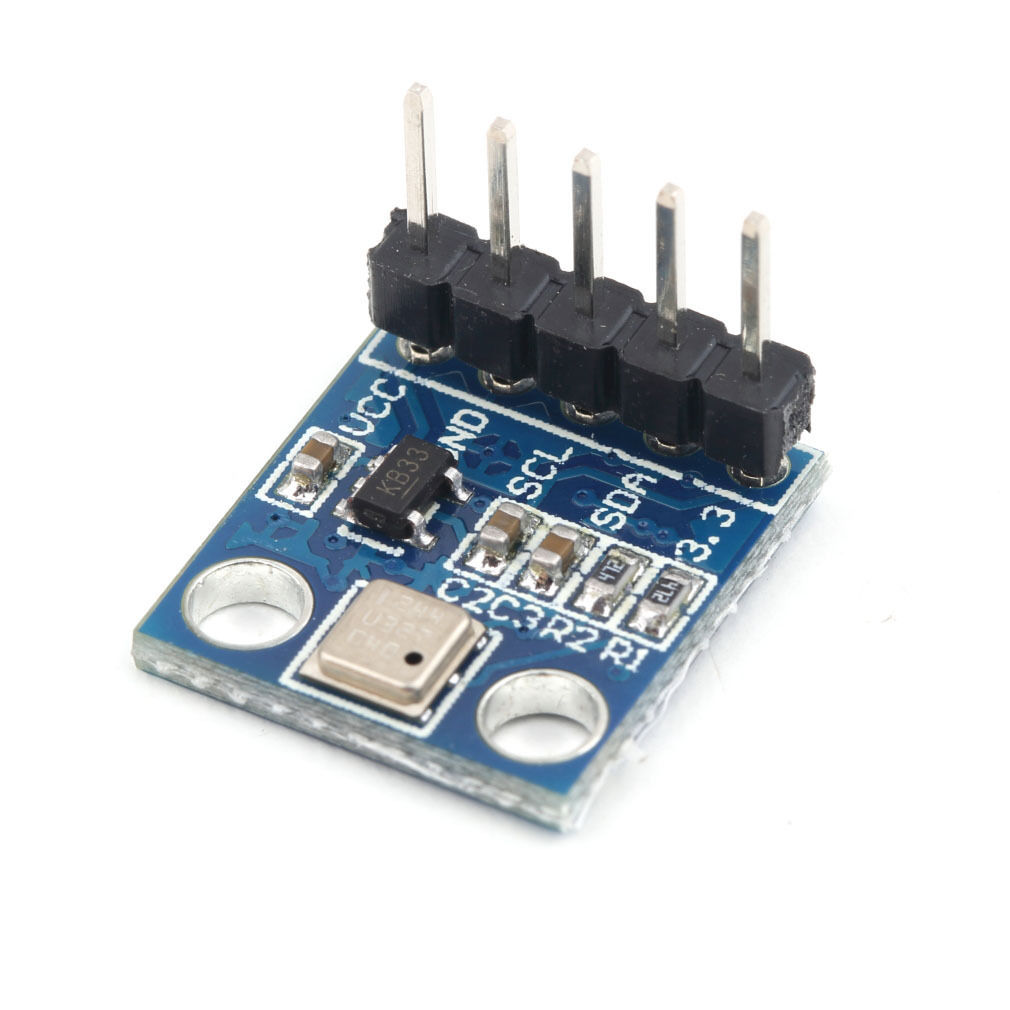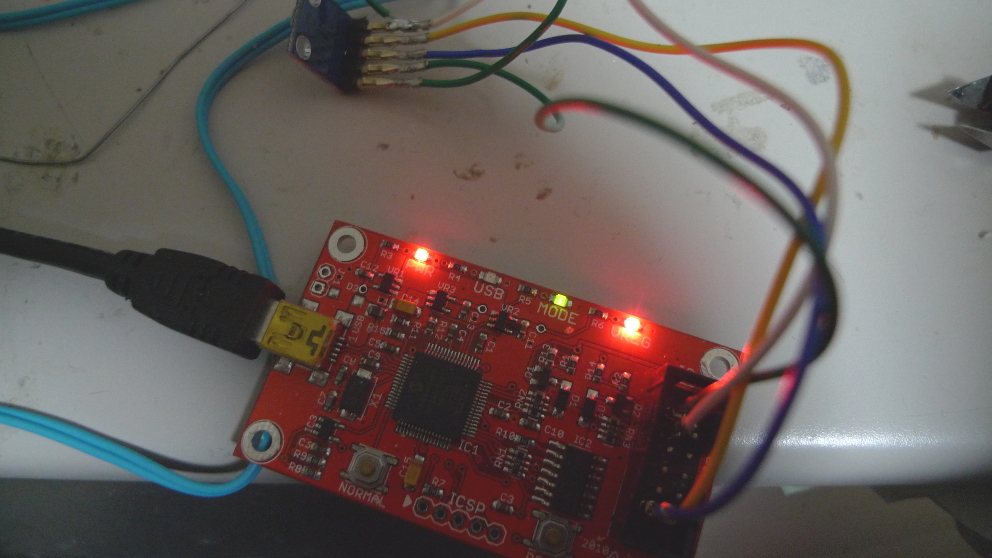BMP180 Barometric Pressure Sensor
I pick the module above up on ebay for about 2USD shipped. I figured at that price it would be interesting to pay around with. As a first step I attached it to a bus pirate v4 to see if I could get some basic readings, this post contains my notes on reading the temperature from the device. It should be pretty easy to modify this for pressure readings. The bus pirate setup looked like this, pretty standard I2C connection:
For these tests the initial, I2C setup was as described here. Both the 3.3V and VCC lines on the module needed to be connected to the 3.3V supply. The output of the bus scan was as follows:
I2C>(1) Searching I2C address space. Found devices at: 0xEE(0x77 W) 0xEF(0x77 R)
The address values above are correct according to the datasheet. After the initial scan I shorted the power and ground lines (clever me!) and the magic smoke was released from VR2. Looks like I’ll be replacing that. However, surprisingly everything still works.
Before you can do much with the BMP180 you need to read the calibration values from its EEPROM. These start at EEPROM address 0xAA and are described on page 15 of the datasheet. Here’s an example of how you’d read the first calibration value, which is stored at indexes 0xAA and 0xAB with the bus pirate. Writing 0xAA to 0xEE selects the register. Reading from 0xEF then reads the register bytes. It looks like it auto-increments too:
I2C>[0xee 0xaa] I2C START BIT WRITE: 0xEE ACK WRITE: 0xAA ACK I2C STOP BIT I2C>[0xef rr] I2C START BIT WRITE: 0xEF ACK READ: 0x1F READ: ACK 0x98 NACK I2C STOP BIT
Here are the register values I read on my device, with the values required for temperature conversion decoded as decimal.
NAME: REG IDX : VALUES : DEC AC1 : 0xAA 0xAB: 0x1F 0x98 : 8088 AC2 : 0xAC 0xAD: 0xFB 0x9E : -31646 AC3 : 0xAE 0xAF: 0xC7 0x17 : -18199 AC4 : 0xB0 0xB1: 0x81 0x51 : AC5 : 0xB2 0XB3: 0x62 0x3A : 25146 AC6 : 0xB4 0xB5: 0x3B 0xB2 : 15282 B1 : 0xB6 0xB7: 0x19 0x73 : B2 : 0xB8 0xB9: 0x00 0x2A : MB : 0xBA 0xBB: 0x80 0x00 : MC : 0xBC 0xBD: 0xD1 0xF6 : -20982 MD : 0xBE 0xBF: 0x0A 0xAB : 2731
As I understand it writing 0x2e to register 0xf4 selects temperature reading:
I2C>[0xee 0xf4 0x2e] I2C START BIT WRITE: 0xEE ACK WRITE: 0xF4 ACK WRITE: 0x2E ACK I2C STOP BIT
The temp can then be read by writing 0xf6 to select the MSB (and 0xf7 for LSB), and then reading from register 0xef:
I2C>[0xee 0xf6] I2C START BIT WRITE: 0xEE ACK WRITE: 0xF6 ACK I2C STOP BIT I2C>[0xef r] I2C START BIT WRITE: 0xEF ACK READ: 0x59 NACK I2C STOP BIT I2C>[0xee 0xf7] I2C START BIT WRITE: 0xEE ACK WRITE: 0xF7 ACK I2C STOP BIT I2C>[0xef r] I2C START BIT WRITE: 0xEF ACK READ: 0xC3 NACK I2C STOP BIT
The above reads show a value of 0x59 for the MSB and 0xC3 for the LSB. Converting these to a single decimal gives 22979. Page 15 of the datasheet describes how to convert the temperature and the calibration values into a reading in Celsius. I threw this all into bc:
x=(22979-15282)*(25146/(2^15)) y=(-20982*(2^11))/(x+2731) z=x+y ((z+8)/(2^4))/10 5.873557310957312033718
So approximately 6 degrees. Given it’s about 4 degrees outside in Tokyo, and I don’t have the heating on that seems about right!
If I decide to move forward with this part I’ll likely attach it to a dedicated microcontroller now I have basic I2C comms working.

